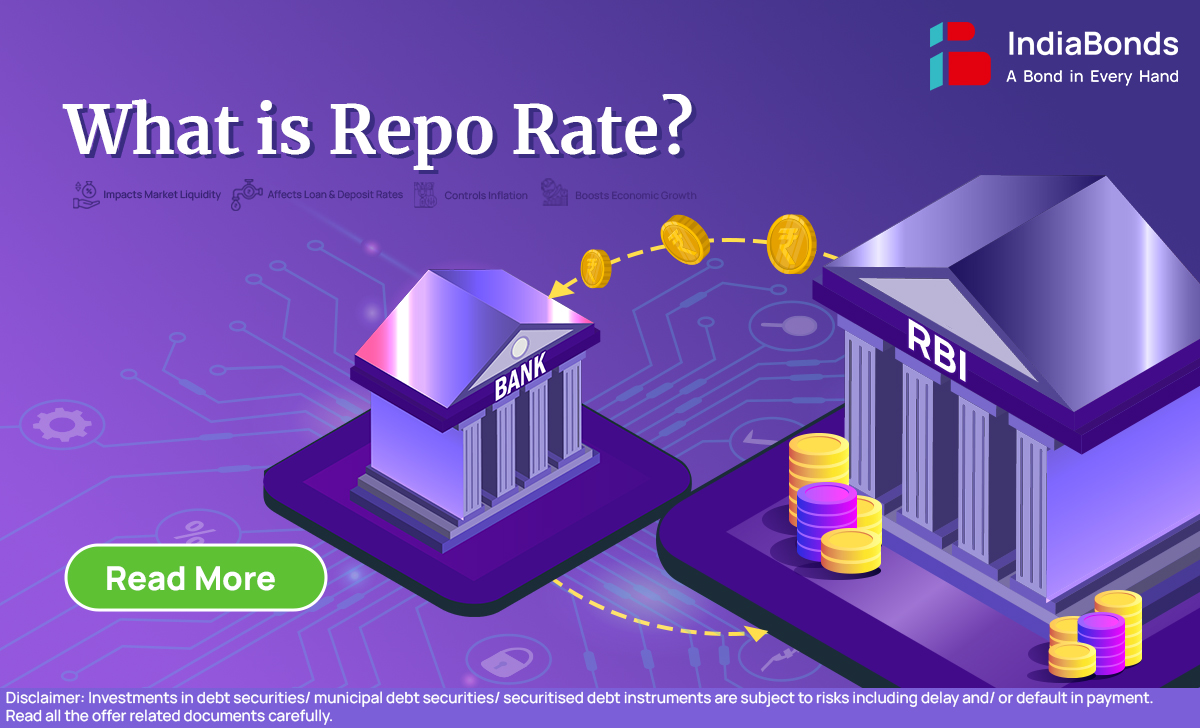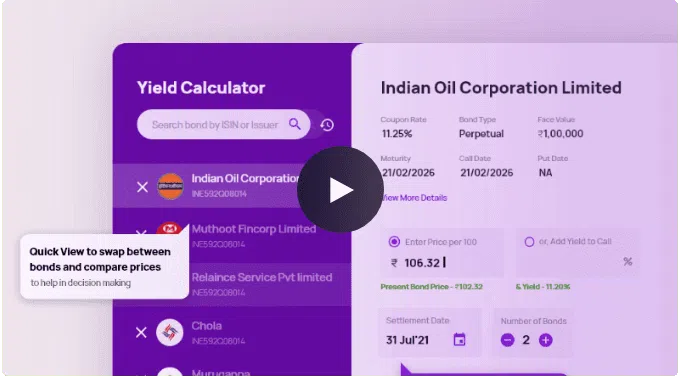What is the Repo Rate?

In financial news, you must’ve heard the term “repo rate”, but what exactly does it mean for you and how does the repo rate affect a common man? Let’s understand.
Imagine banks occasionally need quick cash—just like we do. Instead of a friend or relative, they turn to the Reserve Bank of India (RBI). But here’s the catch: banks don’t borrow for free. The RBI charges interest on these short-term loans, and that interest rate is called the repo rate.
To secure these loans, banks offer government bonds as collateral—a safety net for the RBI. Think of it like pledging jewelry for a personal loan, but on a much larger scale. The repo rate isn’t arbitrary; it’s a strategic lever the RBI pulls to steer the economy. By tweaking this rate, the central bank influences everything from inflation to your loan EMI.
How Does Repo Rate Work?
Think of it like this: when banks need to borrow money from the RBI, they give the RBI some government bonds as a promise. They say, ‘Here, hold onto these.’ Then, they agree to repurchase those bonds later but have to pay a little extra. That extra bit they pay is the interest, and that whole deal – the borrowing and the promise to buy back – is called a ‘repo.
Here’s how it works:
- Borrowing with Collateral: Banks borrow from the RBI by offering government securities.
- Repurchase Agreement: They agree to buy back these securities later at a pre-set price.
- The Hidden Cost: The difference between the initial loan amount and the repurchase price? That’s the repo rate—the interest banks pay.
If the RBI hikes the repo rate, borrowing becomes costlier for banks. Naturally, they pass this cost to customers through higher loan rates. Conversely, a lower repo rate eases borrowing costs, potentially making loans cheaper for businesses and individuals.
Why is Repo Rate Important?
This isn’t just a number for economists to debate. It directly shapes your financial life:
- Taming Inflation: When prices surge uncontrollably, the RBI raises the repo rate. Higher borrowing costs discourage spending and lending, cooling down inflation.
- Boosting Growth: In sluggish economic phases, a lower repo rate injects liquidity. Cheaper loans encourage businesses to expand and consumers to spend, reviving economic momentum.
Your Loans, Savings, and the Repo Rate
- Home & Car Loans: A repo rate hike often translates to higher EMIs – essentially interest rates going up for floating rate loans (Floating Interest Rates)
- Savings Accounts & FDs: Higher repo rates can mean better returns on fixed deposits
- Stock Market Ripples: Expensive borrowing may slow corporate growth, affecting stock performance.
For the RBI, it’s a balancing act—too much liquidity fuels inflation, while too little stifles growth.
How Does RBI Calculate Repo Rate?
The central bank isn’t shooting in the dark. Its decisions hinge on:
- Inflation Trends: Rising prices often trigger rate hikes.
- Economic Growth Metrics: Slow GDP growth? Rates may drop to spur activity and consumption.
- Global Factors: Oil prices, foreign investments, and global interest rates play a role.
- Bank Liquidity: Ensures financial institutions aren’t starved of funds.




Real-World Impact: From Your EMI to Corporate Expansion
For Consumers
- A 1% repo rate increase could raise your home loan EMI by thousands annually.
- Fixed deposit rates often climb within months of a rate hike.
For Businesses
- Costlier loans might delay factory expansions or hiring.
- Working capital loans become volatile, affecting supply chains.
Historical Context: Lessons from the Past
- 2013 Inflation Surge: RBI raised rates to curb spiralling prices.
- Post-COVID Recovery: Rates hit record lows to revive economic activity.
- Global Shocks: Events like the Ukraine war or U.S. Fed rate changes indirectly sway RBI decisions.
Historical Context: Lessons from the Past
- 2013 Inflation Surge: RBI raised rates to curb spiralling prices.
- Post-COVID Recovery: Rates hit record lows to revive economic activity.
- Global Shocks: Events like the Ukraine war or U.S. Fed rate changes indirectly sway RBI decisions.
Conclusion
The repo rate isn’t just jargon—it’s the heartbeat of the economy. Whether you’re repaying a loan, parking savings, or running a business, this rate quietly shapes your financial journey. Staying informed helps you anticipate EMI changes, optimize investments, and make smarter money decisions.
FAQs
1. What is meant by repo rate?
It’s the rate at which the RBI lends short-term funds to banks against government securities.
2. How does repo rate impact inflation?
A higher repo rate discourages borrowing and reduces money supply, controlling inflation.
3. Why does the RBI change repo rate?
The RBI adjusts repo rate based on inflation, economic growth, and liquidity conditions.
4. How does repo rate affect home loans?
When the repo rate increases, banks raise home loan interest rates, making EMIs costlier.
5. How does RBI calculate repo rate?
The RBI considers inflation, liquidity, economic growth, and global financial conditions before setting the repo rate.
Disclaimer : Investments in debt securities/ municipal debt securities/ securitised debt instruments are subject to risks including delay and/ or default in payment. Read all the offer related documents carefully.


















Indiabonds | 5 min

Indiabonds | 5 min



































